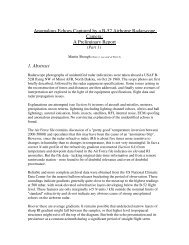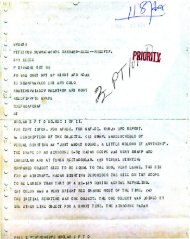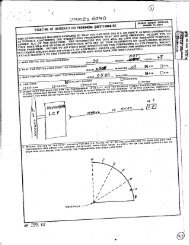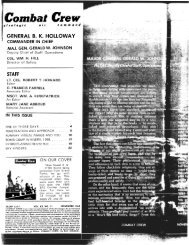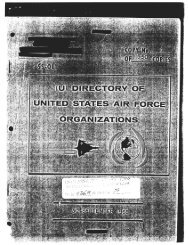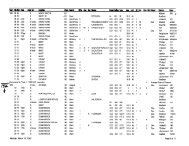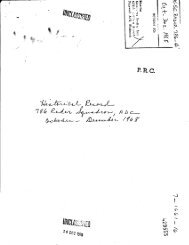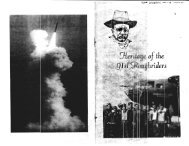TACTICAL AIR NAVIGATION (TACAN) - GlobalSecurity.org
TACTICAL AIR NAVIGATION (TACAN) - GlobalSecurity.org
TACTICAL AIR NAVIGATION (TACAN) - GlobalSecurity.org
You also want an ePaper? Increase the reach of your titles
YUMPU automatically turns print PDFs into web optimized ePapers that Google loves.
Figure 2-4.—Transponder output pulse train.<br />
15-HZ-BEARING INFORMATION<br />
The rf energy from the <strong>TACAN</strong> transmitter is fed<br />
to the antenna central element, which has no<br />
The timing of the transmitted pulses supplies the directivity in the horizontal plane. Parasitic elements<br />
actual distance information to the aircraft. This leaves positioned around the central element are<br />
amplitude modulation as another medium for the electronically rotated (switched on and off) at 15<br />
transponder to convey other information to the revolutions per minute. (See the section below on the<br />
aircraft. The <strong>TACAN</strong> beacon-transponder modulates OE-273(V)/URN antenna group). The distance<br />
the strength of the pulse to convey bearing information between the central element and the parasitic elements<br />
by producing a specific directional-radiating pattern is selected to obtain a cardioid radiation pattern. To<br />
rotated around a vertical axis. This signal, when an aircraft at a specific location, the distance data<br />
properly referenced, indicates the aircraft’s direction pulses appear to contain a 15-Hz amplitude-modulated<br />
from the <strong>TACAN</strong> facility. This signal and distance signal because of the rotation of the cardioid radiation<br />
data give a two-piece fix (distance and direction) for pattern. This pattern is shown in figure 2-5, view A<br />
determining specific aircraft location. and view B.<br />
2-3



